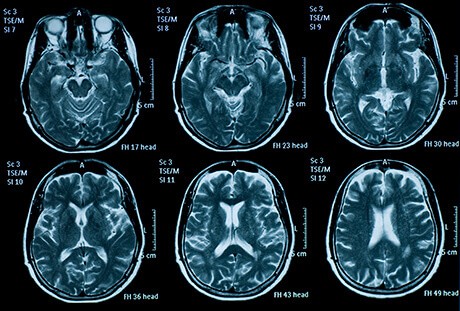It’s an unexpected discovery: All else being equal, girls whose rare and deadly brain tumors are fully removed live almost six years longer than boys with the same condition.
The finding, published Aug. 18 in Neurosurgery, suggests that gender-specific genes and other epigenetic factors might influence the formation and development of pediatric brain cancers, specifically high-grade glioma, as well as their response to standard treatment. Girls’ overall survival was 8.1 years from the time of their surgeries, versus 2.4 years for males who underwent the same procedure.
“These patients’ tumors presented identically and were treated identically, but the children had very different outcomes,“ said Dr. Jeffrey Greenfield, an associate professor of neurological surgery at Weill Cornell Medical College and the study’s senior author. “It’s early, but I think that this opens up really exciting possibilities for exploring the differences in gene expression between boys and girls with brain tumors.”
The retrospective study, which physicians believe to be the largest of its kind, looked at 97 patients treated at Weill Cornell and Memorial Sloan Kettering Cancer Center – 43 females and 54 males – who were 21 or younger at the time they were diagnosed with the rare and malignant high-grade glioma. Researchers gathered information including tumor location, type and grade. They also reviewed surgeons’ notes and radiology reports measuring how much tumor had been removed during surgery, the date of recurrence or progression, and the date of death or last doctor’s visit. The median overall survival was 1.7 years.
Scientists conducted the study, in part, because new knowledge suggests that pediatric and adult brain tumors, which look similar microscopically and on MRI scans, are quite different at their genetic levels, said Greenfield, who is also the director of the Children’s Brain Tumor Project at the Weill Cornell Pediatric Brain and Spine Center and a pediatric neurosurgeon at NewYork-Presbyterian/Weill Cornell Medical Center.
In both cases, surgery to totally remove the brain tumor is, when possible, the preferred primary treatment protocol. Patients whose tumor was fully removed had an overall survival rate of 3.4 years, versus 1.6 years for those in whom only partial removal was possible.
With more research and in-depth analysis, researchers hope to shed light on previously unexplained mechanisms of response – or resistance – to treatment, Greenfield said. His group is working with Weill Cornell’s Institute for Precision Medicine, where scientists are identifying individualized genomic variations in pediatric brain tumors that physicians are using to inform routine treatment decisions. Unexpected findings are leading to new projects and avenues of investigation, Greenfield said.
“This is one example of an accidental discovery that’s raised some interesting questions and challenged accepted dogma that we’re now exploring,” he said. “Hopefully preliminary data will be available soon that will shed light on this fascinating gender difference.”


